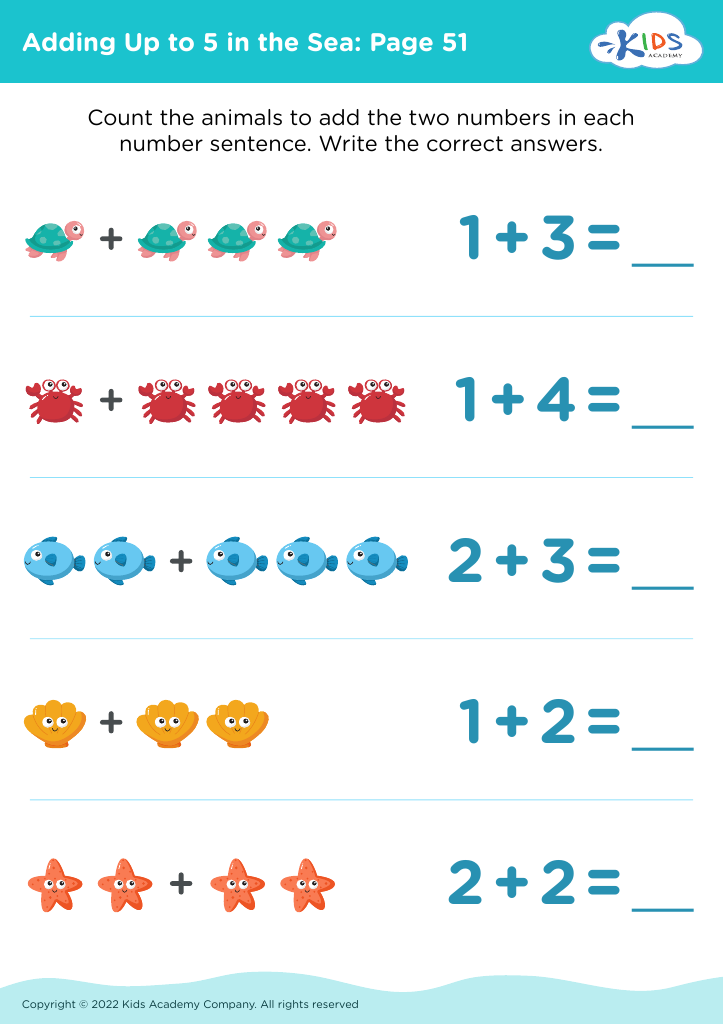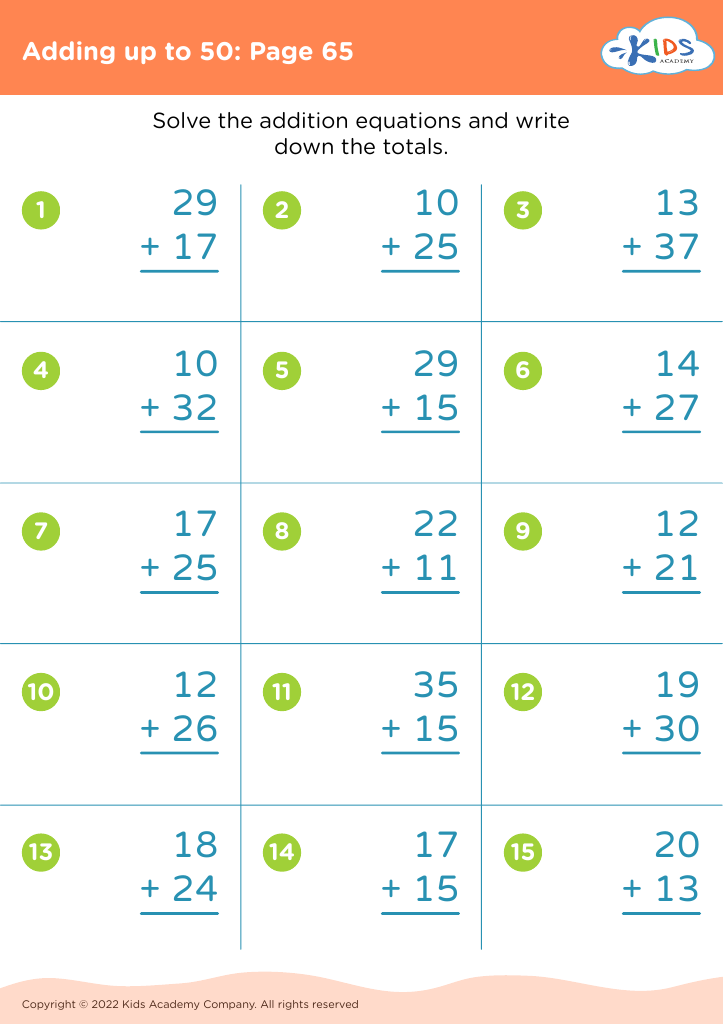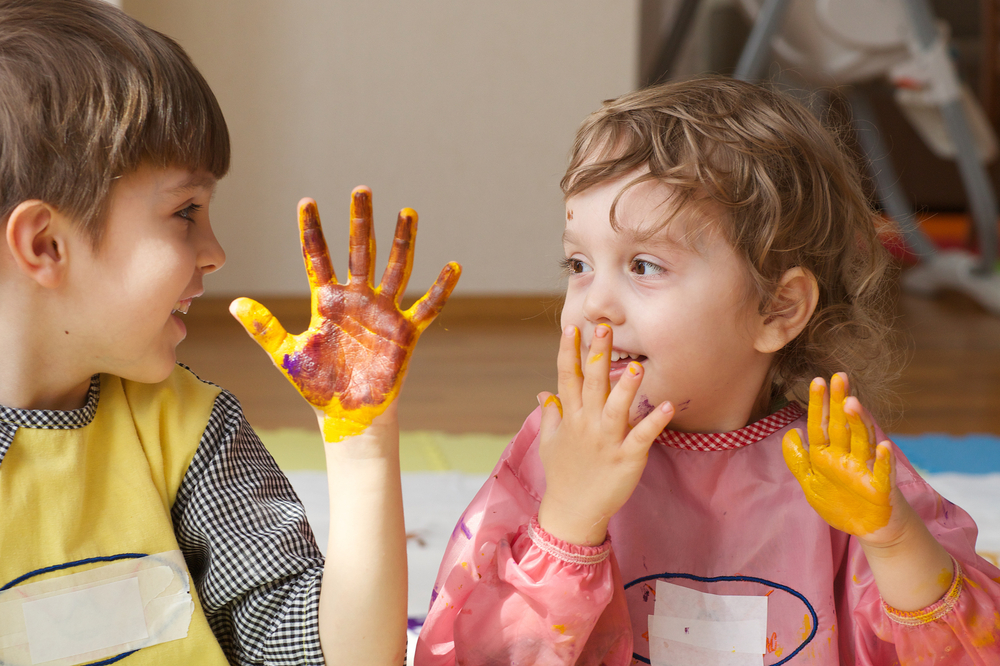Understanding number relationships Worksheets for Ages 4-8
9 filtered results
-
From - To
Discover our engaging "Understanding Number Relationships" worksheets designed for children ages 4-8! These worksheets help young learners grasp essential concepts such as one-to-one correspondence, comparing quantities, and identifying patterns. With colorful illustrations and age-appropriate exercises, students will develop foundational math skills while having fun. Each worksheet encourages critical thinking and problem-solving, making math enjoyable and accessible. Perfect for both classroom and home use, our resources support differentiated learning tailored to each child's needs. Foster a love for numbers and build confidence as your child explores the world of mathematics through our thoughtfully crafted activities. Start their learning journey today!


10 Tens Make 1 Hundred Worksheet
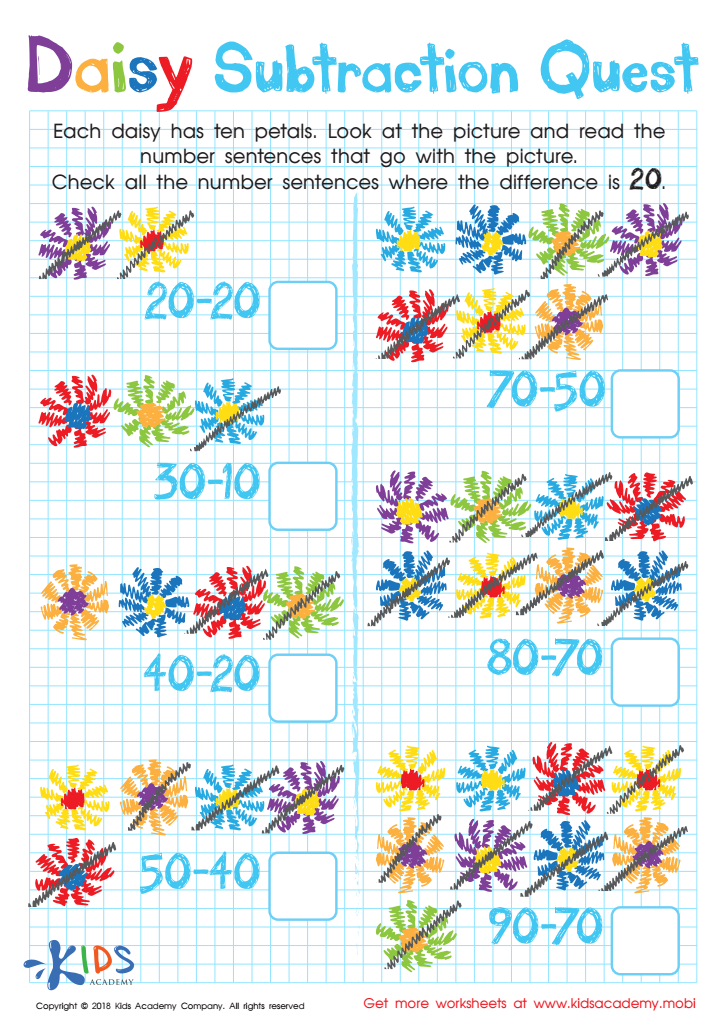

Daisy Subtraction Quest Worksheet
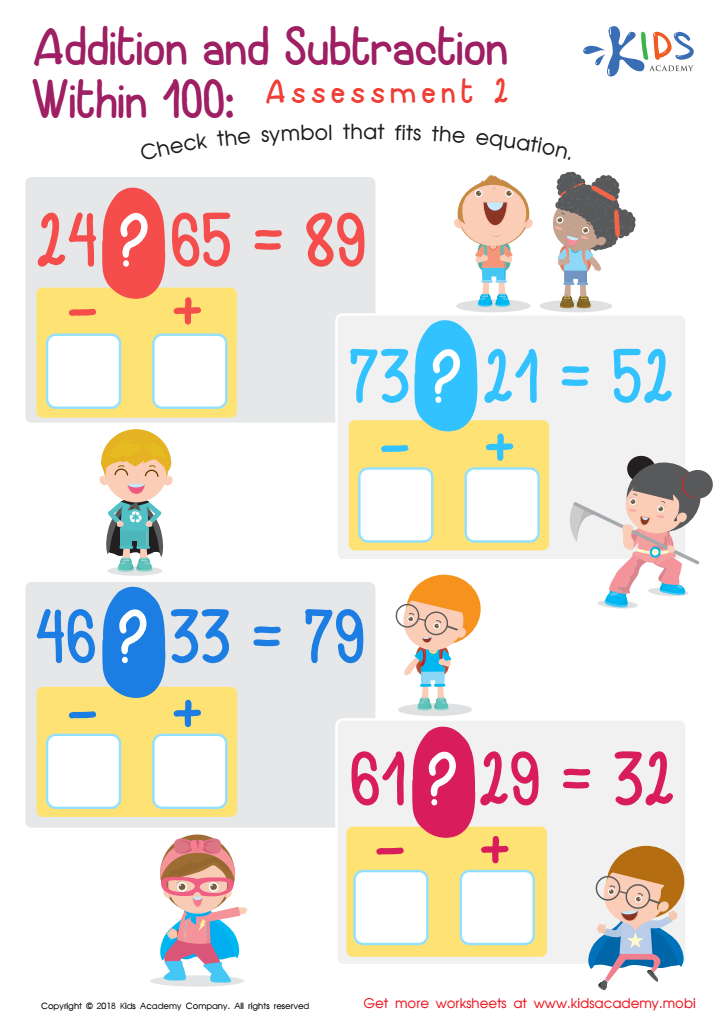

Addition and Subtraction Within 1: Assessment 2 Worksheet
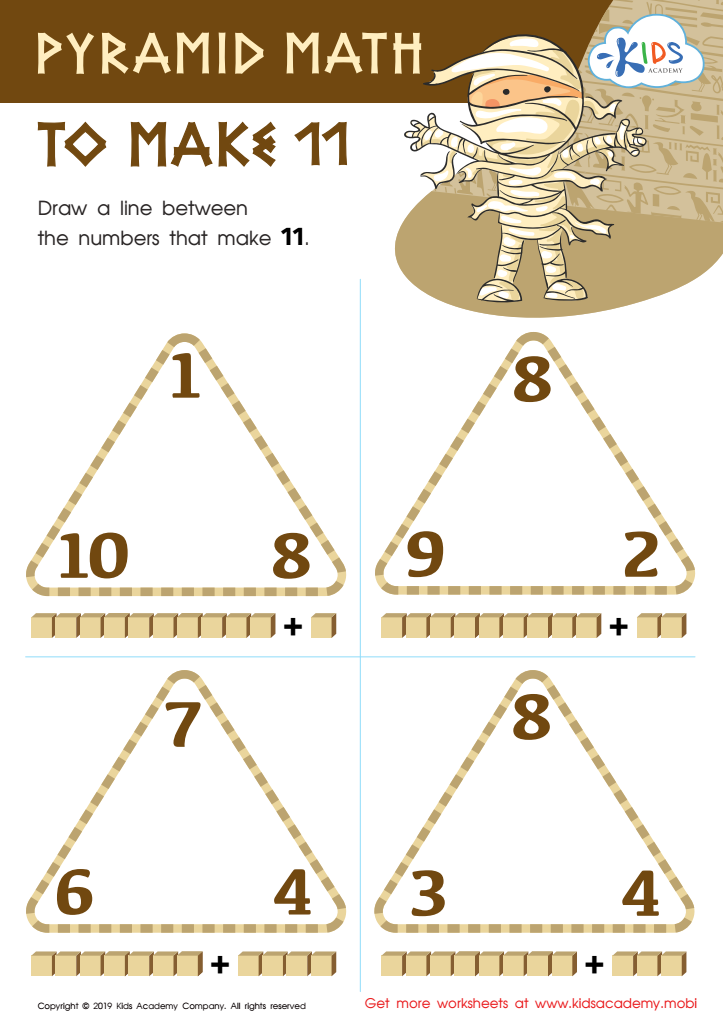

Pyramid Math to Make 11 Worksheet
Understanding number relationships is crucial for children aged 4-8, as it forms the foundation for all future mathematical learning. During these formative years, children are developing cognitive skills that aid in problem-solving and critical thinking. Investing time in number relationships helps them understand concepts such as addition, subtraction, and even more advanced operations later on.
When parents and teachers emphasize number relationships, children learn to see connections among numbers, such as how numbers can be decomposed and recomposed. This understanding encourages flexible thinking and allows children to approach problems from different angles, fostering a deeper comprehension of mathematics.
Moreover, a strong grasp of number relationships supports the development of numeracy skills. As children learn to recognize patterns and relationships among numbers, they gain confidence and become more competent in solving mathematical problems, both in school and in everyday life.
Additionally, this foundational knowledge can help alleviate math anxiety, as children become more comfortable and familiar with numbers. Overall, fostering an understanding of number relationships is essential for nurturing a positive attitude towards math, paving the way for lifelong learning and success in this critical area.
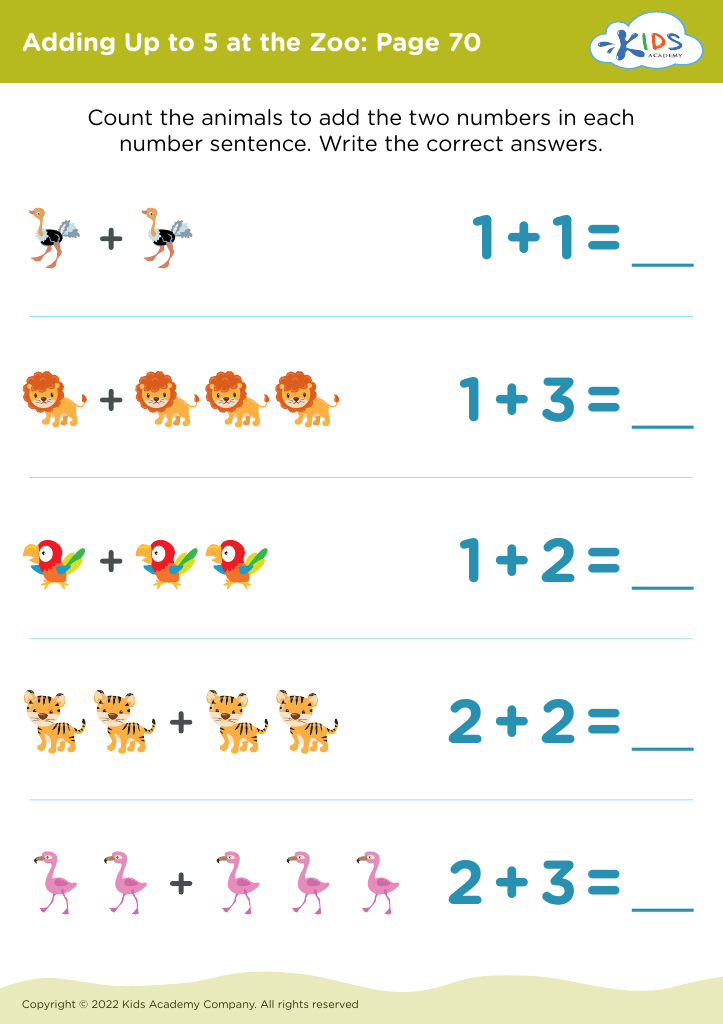
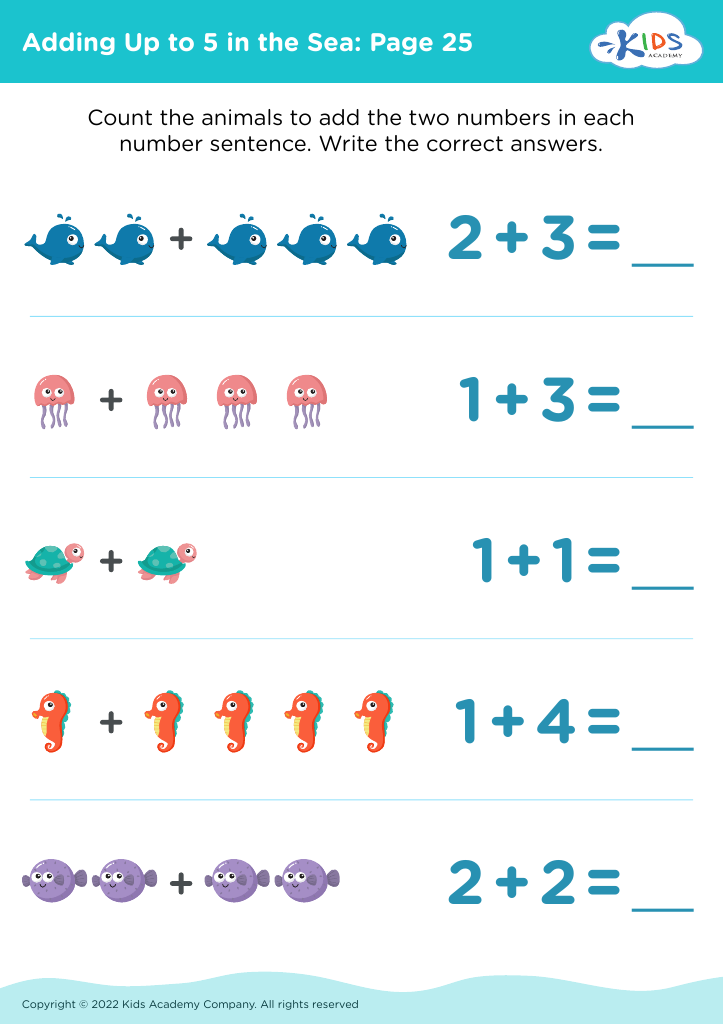
 Assign to My Students
Assign to My Students
